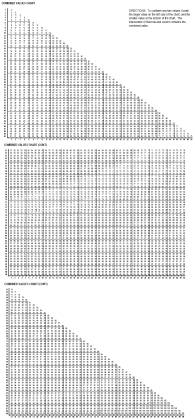Suggestions for the Ogilvie Calculator

I was recently sent feedback about the Ogilvie DFEC rebuttal calculator on this website. ((Photo courtesy of biketrouble)) Here’s how I’ve incorporated that feedback:
- Inputs. The calculator results repeats the inputs with the results. This ensures that the answer provided gives you enough context when showing the calculation to the other side or when you go back to review your file.
- Email. You can now e-mail your calculations to yourself.
- Links. I’ve added a link to the various Employment Development Department and U.S. Dept of Labor, Bureau of Labor Statistics inside the calculator itself. It doesn’t automatically obtain the information, but hopefully you will find this helpful.
There are two other issues I’m thinking about:
- An easy way to pull up the FEC rank of a particular body part. Its kind of a pain to look up the body part, find the FEC rank, and then enter that into the calculator. I’m thinking ways to simplify this process. This shouldn’t be too bad to write.
- Rating using the Ogilvie DFEC adjusted whole person impairment. This one will prove to be a difficult one to write in an intuitive fashion.
How would you change these calculators? What else would you like to see? What do you hate about them? Shoot me an e-mail or leave a comment!


